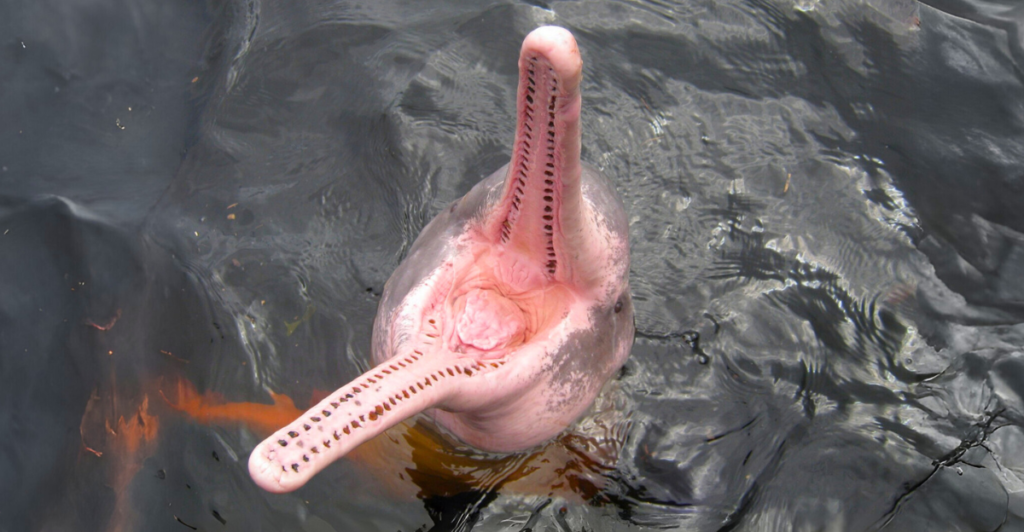
A fascinating phenomenon has been observed in the Amazon River: botos (male Amazon river dolphins) have been exhibiting behavior that is both intriguing and uncommon. These dolphins display a unique behavior known as “aerial urination,” where they flip over and urinate into the air. Scientists have been curious about this behavior. It is unclear what purpose this serves these animals or how it affects their social dynamics. While many terrestrial animals use urine to communicate, the role of urine in aquatic environments is less understood, making this discovery particularly interesting.
Background on Urine Communication
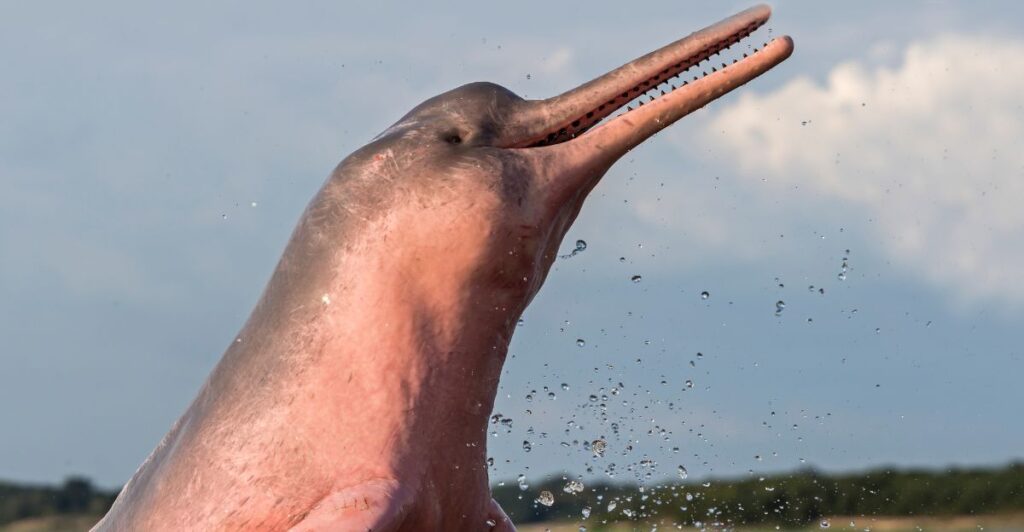
Urine is a popular form of communication among many animals, as it can convey information about their health, social status, or reproductive availability. This is well-documented in land mammals, such as dogs, who use urine marking to communicate with other dogs. The use of urine for communication in other aquatic mammals is not well studied, making the botos’ behavior interesting for researchers.
The Botos and Their Habitat
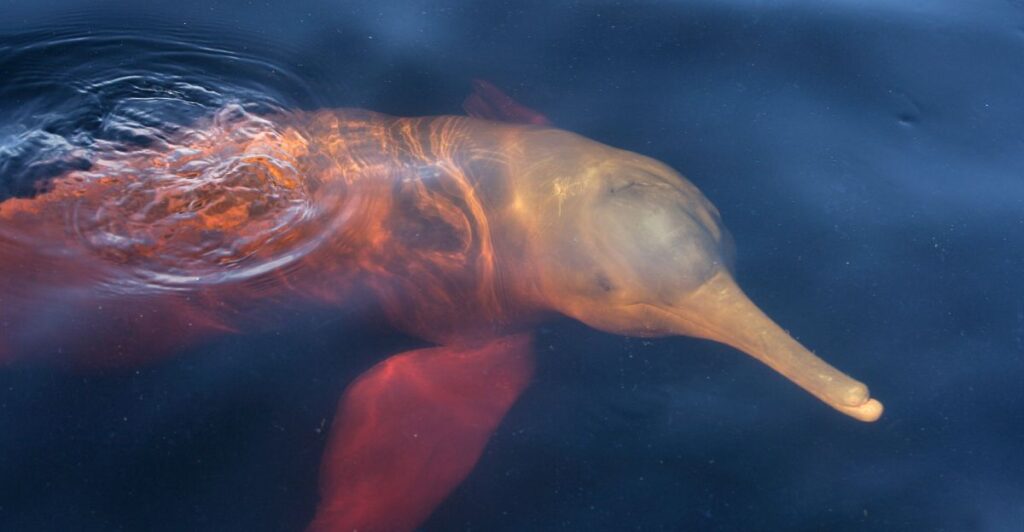
Boto are found in the freshwater regions of South America in the Amazon and Orinoco river basins. They live in murky waters that reduce visibility, which may make chemical communication more important to them compared to visual or auditory communication.
Observations of Aerial Urination
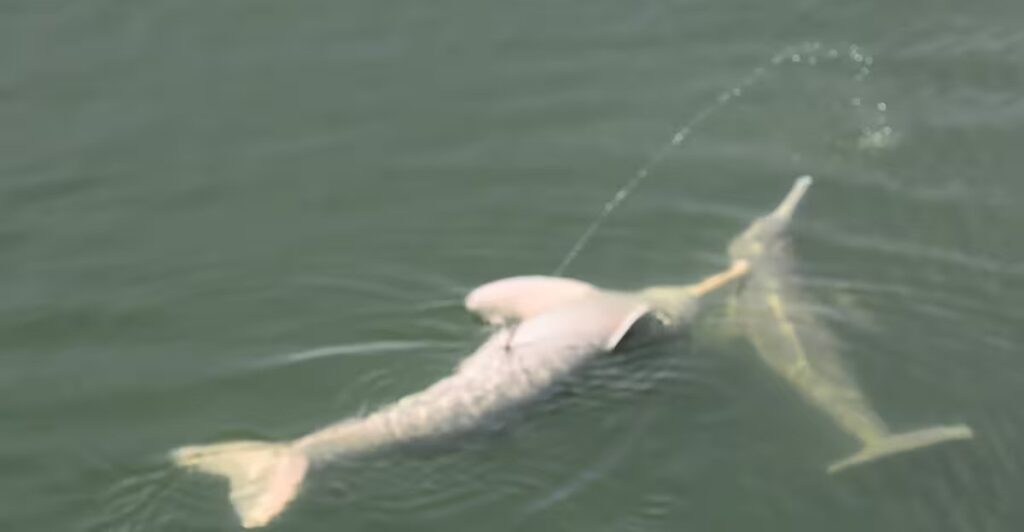
Researchers have observed male botos engaging in aerial urination while studying the Tocantins River in central Brazil. This behavior involves a male dolphin rolling onto its back, exposing its genitalia out of the water, and squirting a stream of urine into the air. The urine stream can reach heights of over three feet before landing in the water near the dolphin’s head.
Patterns of Movement During Urination
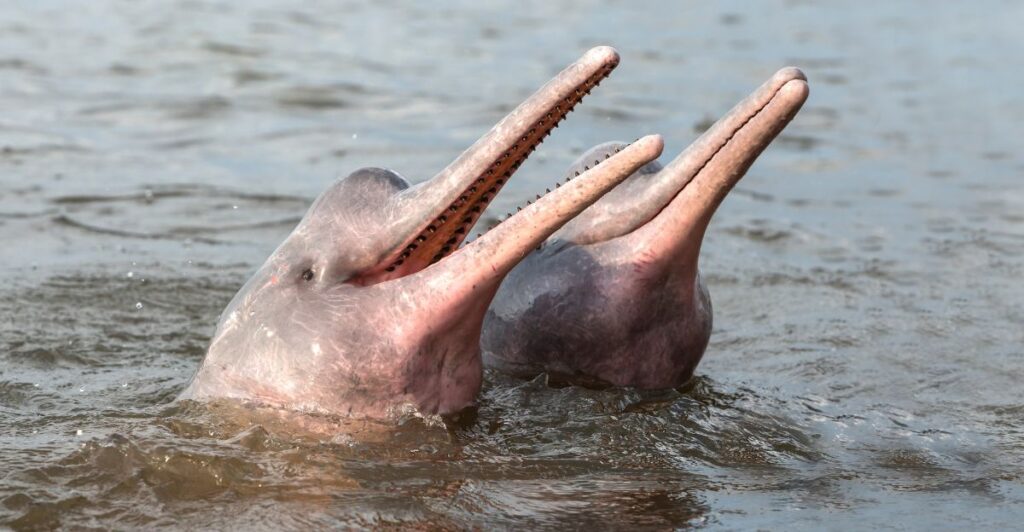
Dolphins swim in linear, circular, and zig-zag patterns while urinating. This movement suggests that the behavior is not random and may have an intended purpose beyond waste elimination.
Socializing During Aerial Urination

What makes this behavior stand out is the engagement of other male dolphins. In approximately two-thirds of the recorded cases, another male dolphin swam over to the spot where the urine was landing and placed its snout into the urine stream. In fact, at times, the receiving dolphin even appeared to chase the stream, suggesting a keen interest in the urine.
The Role of the Rostrum
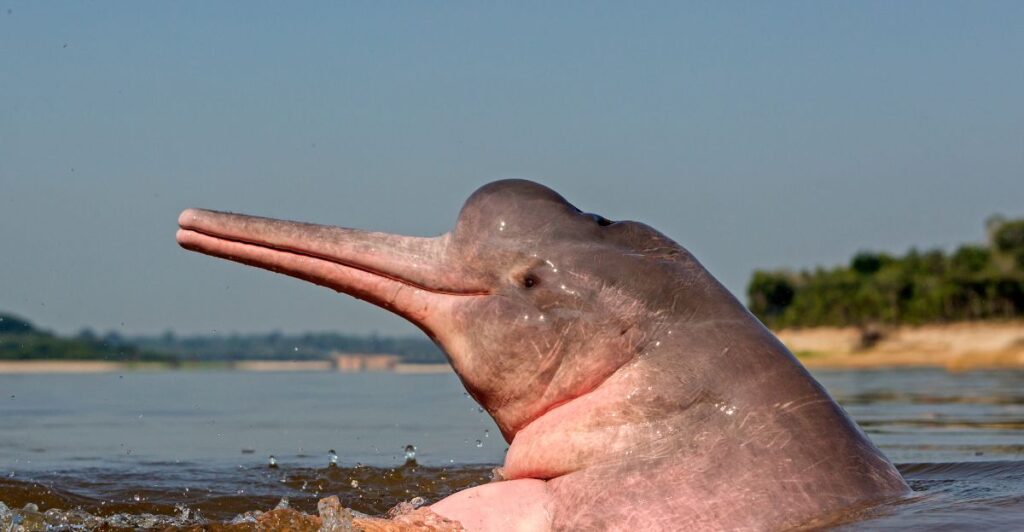
Botos have sensory bristles around their rostrums (snouts), which are thought to help detect chemical signals from their surroundings. These bristles may play a crucial role in interpreting the information contained in the urine, such as hormonal content indicating social status or health.
Hypotheses on the Function of Aerial Urination
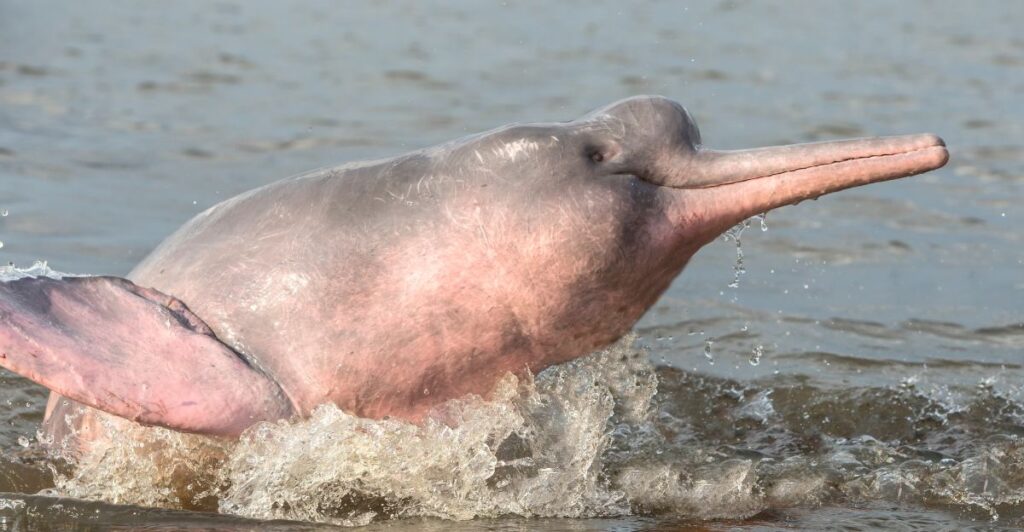
In an ongoing study, researchers theorize that aerial urination could have a social role, perhaps signaling a male’s quality regarding social standing or physical condition. This behavior may be a unique form of communication adapted to the dolphins’ environment.
Comparison with Other Aquatic Animals
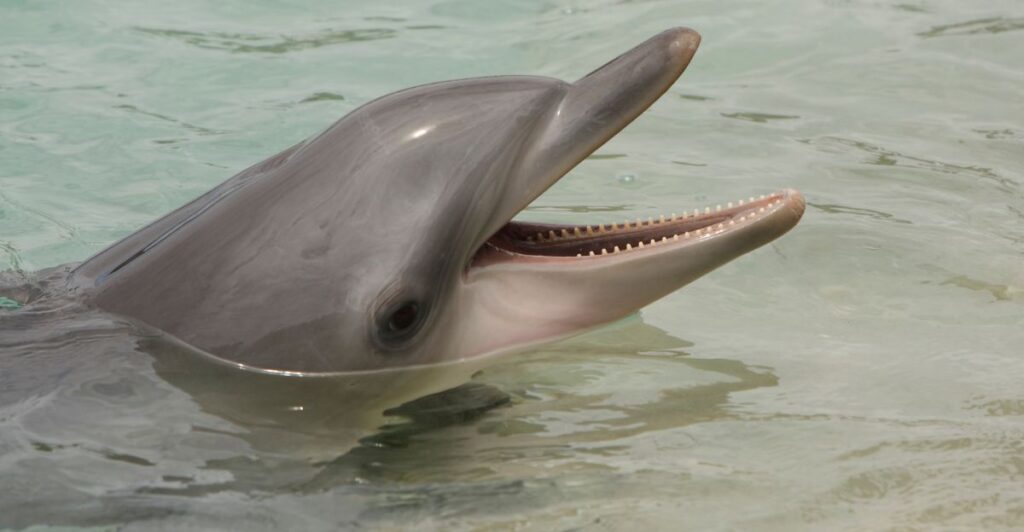
While urine serves as a communication tool in some aquatic animals, such as certain fish and crayfish, the specific role of urine in dolphins is less unclear because they have a limited sense of smell and taste. However, studies on bottlenose dolphins suggest the animals might use their tongues to taste urine and identify peers, which could be relevant in understanding boto behavior.
Social Learning and Aerial Urination
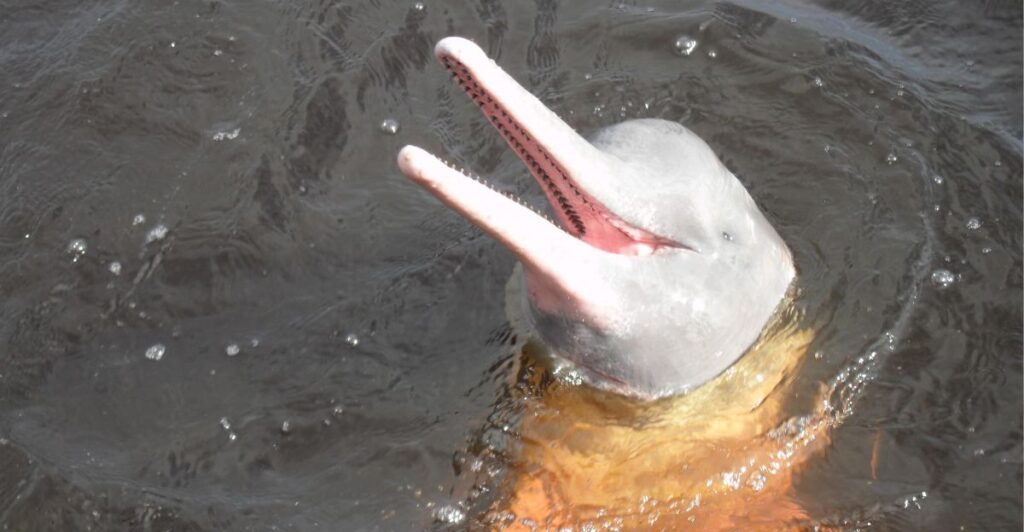
The fact that aerial urination has only been observed in males indicates that this behavior may be socially learned. Although the behavior is more common in males than in females, the males might acquire it from each other, which might explain this prevalence within the male population.
Future Research Directions

Further research is needed to fully understand this behavior’s significance in botos. Scientists aim to explore what information is being exchanged during these social events and how these behaviors affect the social dynamics of the species.
Implications for Understanding Dolphin Communication
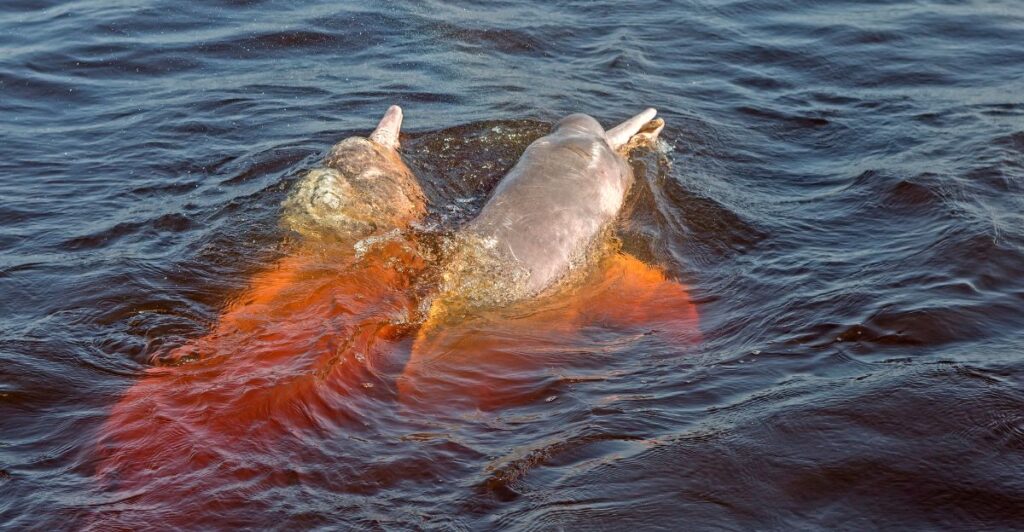
This discovery opens new avenues for studying chemical communication in cetaceans, a field that is largely unexplored. Understanding how botos use urine to communicate could shed light on dolphins’ adaptability to their environment and their complex social interactions.
Unraveling the Mystery of Aerial Unrination
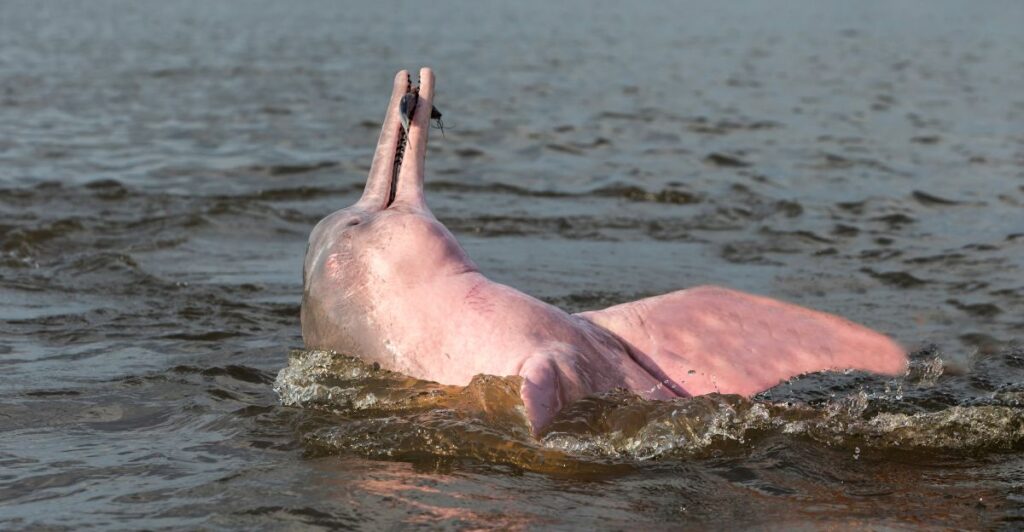
The study of aerial urination in botos emphasizes complex and diverse animal communication strategies. As researchers continue to investigate this behavior, they uncover more insights into the social lives of the fascinating creatures and the way they interact with their environment.
Discover more of our trending stories and follow us to keep them in your feed

California Is Breaking Apart: A Fault Line Is Forming Faster Than Anyone Predicted
Philanthropist Promises To Cover $771.23M Annually After US Exit From Climate Accords
The War on Cows Is Over—And Green Extremists Have Lost
Climate Change Overestimated? New Data Shows Oceans Are Cooling The Planet Faster Than Predicted
References:
Reference 1
Reference 2
Reference 3
This article first appeared here
Stay connected with us for more stories like this! Follow us to get the latest updates or hit the Follow button at the top of this article, and let us know what you think by leaving your feedback below. We’d love to hear from you!







